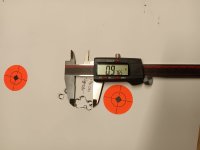My plans are to start reloading for a .270, 6.5 creedmoor and 30-06 to start with. I want to make good precision ammo for the 30-06 to reach out to 1000 yards. This is what I had in mind.
-RCBS rock chucker supreme reloading kit.
-Frankford arsenal platinum case prep and trim station.
-RCBS powder trickler.
-308 shell holder and powder thrower bracket.
-Redding Premium full length sizing die and bullet seater.
-Digital calipers and a Hornady lock and load bullet comparator.
-Vibratory case tumbler and media for cleaning cases.
-Chronograph of some sort to measure bullet speed.
-Brass, powder, bullets and primers.
The RCBS kit comes with a reloading manual and a manual beam scale which I’ve heard is more accurate than the digital powder throwers just takes more time which is fine with me as I’ll just be making small batches of ammo to start with. Is there anything you would add or change, open to all suggestions as I don’t know anyone that reloads so I’ll be learning as I go.
-RCBS rock chucker supreme reloading kit.
-Frankford arsenal platinum case prep and trim station.
-RCBS powder trickler.
-308 shell holder and powder thrower bracket.
-Redding Premium full length sizing die and bullet seater.
-Digital calipers and a Hornady lock and load bullet comparator.
-Vibratory case tumbler and media for cleaning cases.
-Chronograph of some sort to measure bullet speed.
-Brass, powder, bullets and primers.
The RCBS kit comes with a reloading manual and a manual beam scale which I’ve heard is more accurate than the digital powder throwers just takes more time which is fine with me as I’ll just be making small batches of ammo to start with. Is there anything you would add or change, open to all suggestions as I don’t know anyone that reloads so I’ll be learning as I go.


